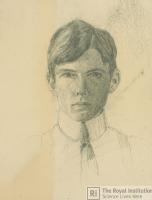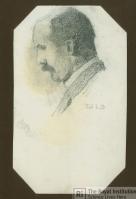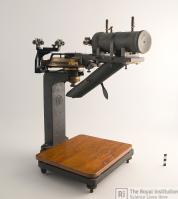From table salt to DNA and new drugs: Warwick exhibition celebrates the Two Braggs
 A major exhibition celebrating the father and son team who paved the way for the discovery of the DNA double helix structure is coming to the University of Warwick.
A major exhibition celebrating the father and son team who paved the way for the discovery of the DNA double helix structure is coming to the University of Warwick.
The Two Braggs exhibition marks the centenary of the publication of research in 1913 by William Henry Bragg and his son William Lawrence which gave birth to the field of X-ray crystallography – still a vital tool used today to discover new drugs to treat diseases.
The Two Braggs exhibition – which runs from 26 – 30 August with a special public day on 30 August - will bring together a wide variety of exhibits, ranging from original scientific apparatus, correspondence with other renowned scientists, Nobel Prize certificates to photographs, self-portraits, watercolours and sketches by the two scientists.

The two were competent amateur artists, a talent which went hand-in-hand with their science as they were able to apply their visual imagination to the interpretation of X-ray diffraction patterns.
Both scientists were also notable for their support of women in science at a time when this was most unusual – of William Henry Bragg’s 18 students, 11 were women.
The Two Braggs exhibition, including many items from the Royal Institution in London where both Braggs were directors, will be the first time in 100 years that the original X-ray equipment, known as ionization spectrometers have been reunited.

These were the forerunners of the modern diffractometer, the standard instrument used today by scientists studying crystal structures.
Professor Mike Glazer, Visiting Professor at the University of Warwick and Emeritus Professor of Physics at the University of Oxford, said: “ The subject of crystallography underpins much of modern science, yet it is hardly appreciated in the public arena, this despite the fact that it has played a role in at least 24 Nobel Prizes.
“The intention of the exhibition is not only to celebrate the achievements of the two Braggs, but also to highlight the importance of crystallography to modern life.
“Our knowledge of modern materials as used in the electronics industries and in engineering, pharmaceutical science, genetics and in the role of DNA, cell biology and many other areas has relied on the discoveries made by the two Braggs 100 years ago.”
Professor Pam Thomas, Chair of the Faculty of Science at the University of Warwick, said: “Today crystallographers use many different techniques to study structures of crystalline materials, including X-ray diffraction using synchrotron radiation, such as at the Diamond Light Source, neutron diffraction such as at the ISIS source at the Rutherford-Appleton Laboratory, and electron diffraction using high-power electron microscopes.
“At the University of Warwick, state-of-the-art laboratories for X-ray diffraction and electron microscopy allow the study of a wide range of crystalline materials at various temperatures, both single crystals and powders.”
William Henry Bragg and his son William Lawrence Bragg are the only father and son team to have won a Nobel Prize.
The first complete determination of a crystal structure was for common table salt, published 100 years ago by William Lawrence, who used his father’s ionization spectrometer.
This was followed by a joint paper by both Braggs on the atomic arrangement of atoms in a crystal of diamond.
Today their techniques are used to gain a molecular understanding of diseases, viruses and bacteria and also of ways to block their action with drugs.
The exhibition will be open to the public over five days from Monday 26 August to Friday 30 August.
It is free to attend any time between 9 am and 8pm every day.
Friday 30 August will be a special public day, featuring lectures on the world of crystals, the Braggs’ legacy, a film about the lives of the Braggs, and an opportunity to visit the state-of-the-art X-ray crystallography laboratories at the University of Warwick.
The exhibition is being held to coincide with the ECM28 exhibition, a major gathering of the world’s experts in crystallography.
It will be held in the Helen Martin Studio at Warwick Arts Centre
ENDS
For media enquiries please contact University of Warwick press officer Anna Blackaby on 02476 57510 or a dot blackaby at warwick dot ac dot uk
To visit the exhibition, please register here 
For media enquiries please contact University of Warwick press officer Anna Blackaby on 02476 57510 or a dot blackaby at warwick dot ac dot uk
